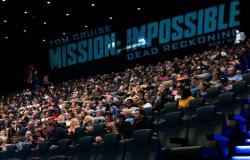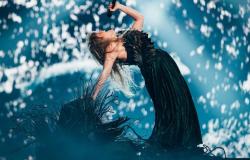Nonfiction
Publisher:
October
Release year:
2024
«Elling’s many reflections on madness and art are so good and convincing that this alone makes the book worth a six.»
See all reviews
After hearing the work – and reading this book – it is easy to understand that the genius explanation lies loosely with this popular elitist with absolute ear.
Carstensen was born in Eidsvoll into a family of dam guards who became musicians after Carstensen’s grandfather suffered a serious accident. The grandfather started playing the accordion:
“This Jules Verne-esque machine with thousands of voices inside, one voice for every emotion that has no words.”
The paternal grandfather taught Stian’s father, who in turn taught Stian, who in turn taught his eldest son, Gabriel.
Convincing
Carstensen himself is inspired by jazz and especially Bulgarian folk music and also plays guitar, banjo and flute. In one place, Elling uses the word “association tourette” about his friend’s unique musical talent. Something of the same can be said about “At the gate of the forest of silence”, which is as much about Elling himself as Carstensen and his work.
The book is striking and associative, knowledgeable and anecdotal, composed of Elling’s own childhood memories, his father’s brutal death from cancer, his mother’s mental illness, Elling’s work as a visual artist and musician and his many reflections on madness and art.
This last – about art – is so good and convincing that it alone makes the book worth a six.
A shadow of himself
Invulnerable and curious
The common thread is Stian Carstensen and the work “Musical sanatorium”. Elling first met him in 2011 at Gamle Ormelet on Tjøme, where Carstensen played the accordion: “With Stian I experienced the musical equivalent of my own brain’s disobedience: He was deep into Beethoven, and then suddenly, via a mysterious association, he fell into “Fugledansen”, which via an abrupt syncopation became “Take On Me”. And it felt rigorous and logical. Not surprising at all. I heard, through all the baroque whims, that melodies and riffs are a kind of historical and cultural common property”. Elling tells of a Stian who, at their first meeting, was self-confident, invulnerable and curious about everything – an image that Elling tries to stick to through his friend’s many periods of serious illness, with a brain that never rests, but just spins and spins.
A war cry
“‘Musical sanatorium’ opens with a bang. Or a war cry. Drums and bagpipes play, and you imagine Scots in kilts or Turks in baggy trousers and fez, from the time when there was always a small war going on that you could send young boys into – to toughen them up and make men of them. The sound of the davul and zurna, i.e. skalmeie (a kind of bagpipe) and drum, can to this day make the Turks’ arch-enemies the Bulgarians pale.”
This is an example of the wonderful imagery that permeates the book.
A PIECE OF ART: In the book, Lars Elling manages to say something about real art through the most surprising detours, side tracks and dead ends. Photo: Kristin Svorte
view more
The work itself becomes a kind of hub, where the chapters carry the titles of the various musical pieces in the work.
For example, “tarantella cerebellum”, where we get the history of the dance, lexical information about the cerebellum or cerebellum, take a quick trip to Henrik Ibsen, before Elling describes the stringed instrument cimbalom, which has the solo part of the piece, and then associates it up to the estate of his father.
“To write, it was about finding the intersection between pain, anesthesia and clear thought,” Elling writes somewhere about the writing process behind the novel “Fyrstene av Finntjern” (2023), where he – he says – sent the plot in all directions. The same can be said about this book, which many believe is overloaded with linguistic images and wild associations. I myself think it is wonderful, especially because Elling manages to say something about good art – real art – through the strangest and most surprising detours, side tracks and dead ends.
But first and foremost, it is a brilliantly original and insightful declaration of love to the universal genius Stian Carstensen.







